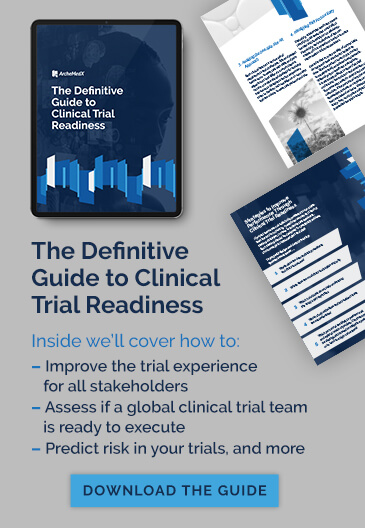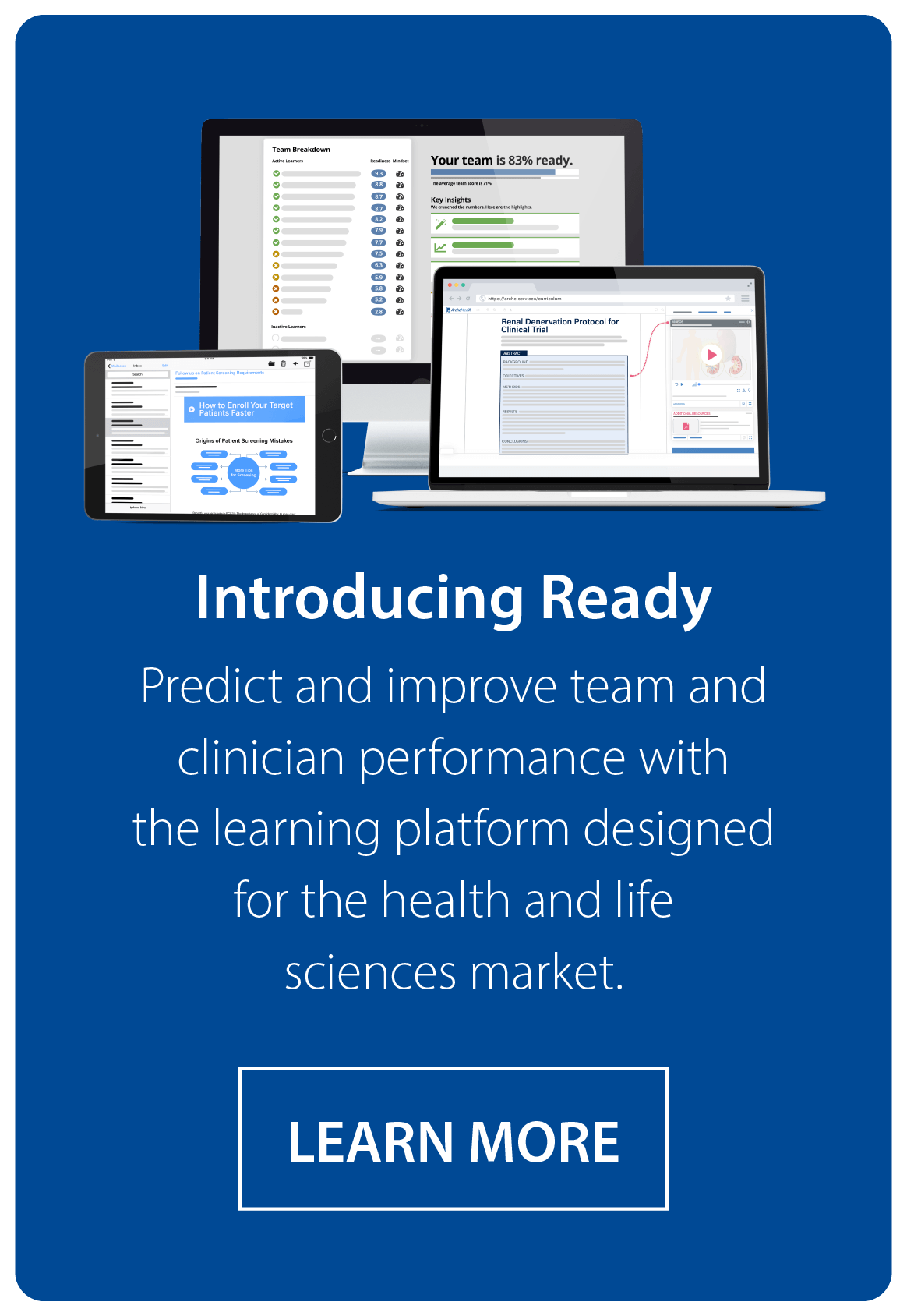By all accounts, the cost of clinical trials continues to rise. We hear reasons that include increasing protocol complexity, patient recruitment struggles, or regulatory challenges. And we shrug our shoulders. Most of us accept these rising costs and obstacles as a given.
But – why?
If you could predict the future problems and risk areas for your upcoming clinical trial, you’d make changes, wouldn’t you?
Over the past year, we’ve been researching how much of the cost of a clinical trial is wasted. That is – money spent on unnecessary activities, or spent while waiting to get through preventable delays. Unsurprisingly for most clinical operations leaders, the largest part of wasted budget comes from those delays.
By analyzing and applying decades of clinical trial data, we produced a benchmark data powered clinical trial calculator. And we’ve been using it to model upcoming clinical trials to reveal where these budget line items could be reduced. So now, in this article, we’re going to share some of the biggest takeaways from where clinical trials are throwing money away.
The math behind the calculations around the cost of clinical trials
Before we get to the biggest cost drivers in clinical trials, let’s explore how many of these calculations are derived.
First, there are a number of widely cited and accepted industry standards. For example, our colleagues at ACRP tell us that CRA turnover at CROs is a whopping 30%!
Similarly, we know that a typical turnover for clinical support staff is around 16%, from MGMA.
These two data points alone reveal the great burden that sponsors (and CROs, and sites) have to shoulder. These are risks that are accepted, but not addressed – at least not proactively.
In addition to including data standards around turnover, we incorporated well-documented cost averages for specific activities during site startup, such as traditional PI meetings and SIV visits. We also cross-referenced multiple resources like Kunal Sampat’s ultimate guide to the cost of clinical trials.
We also validated our models utilizing resources like Clinical SCORE and Science Direct to reveal standards around the average delays in clinical trials and site performance. Based on our intensive industry research and real world evidence (validated through scorecard exercises run on currently active clinical trials), we confirmed that the greatest unnecessary cost in clinical trials is the result of preventable delays.
By preventing delays, you’ll see a major clinical trial cost reduction
After analyzing mountains of clinical trial data with our scorecard, delays were a major contributor to budget waste. If we could prevent just a measly 20% of the delays, we’d see a huge reduction in the cost of clinical trials.
Complexity was a primary red flag for expanding the cost of clinical trials.
Complexity is not easy to define, because it’s a combination of so many pieces. As we discussed in our recent podcast episode with Ken Getz of Tufts CSDD, one factor is the growing amount of data collected. Other factors include the number of sites, therapy area, intensity of patient care, and lab environments.
The more complex a trial is, the more likely the occurrence of delays. Those delays can be because:
- Sites are slow to enroll because they’re not ready.
- Trial sites that fail to enroll patients altogether.
- Sites enroll ineligible subjects.
- Data has to be tossed out because of deviations.
Case study: a fully outsourced Phase II biopharma clinical trial
We ran a scorecard for a biopharma who is fully outsourced to CROs on their Phase II study. It comprised 12 months with just 6 sites.
After we ran their scores, we found a high risk of delays due to complexity. Some of their specific factors were:
- Therapy area – some areas, like oncology and cell/gene therapy – are more complex by nature.
- Protocol design – more complex, as self-selected by the biopharma.
- Being fully outsourced to CROs.
This translated to wasting over 10% of their budget.
The total waste was $1.2 M. Most of that waste came from preventable delays from our scorecard exercise. With a trial this small, that was an eye-opening amount that could be saved. Unsurprising, the larger the trial, the more potential for delays – and the greater the savings we can find with the scorecard.
Cut the unnecessary work that fuels the growing cost of clinical trials
There is so much work that needs to be done to begin a clinical trial. Just starting up is a herculean task.
And contract research organizations know this. So while you will see huge proposals from many CROs, what you won’t see is a push to reduce the manual and mundane activities they’ve always done.
But sponsors have control, and some CROs are pushing innovation as a value proposition. So where can you cut?
Content creation
Months of time, and a myriad of people, go into the development of the clinical trial protocol. More still to create supporting materials, and the monitoring plan. The work has been done to perfect the content.
So why spend more hours, and possibly weeks, to move those assets into a slide deck?
It is – quite simply – redundant work. And even worse, this wasted effort leads to worse trial performance, not better. Why? Many times, trial teams don’t spend time to craft SIV decks well, leading to confusion around the protocol and key study documents.
There has to be a better way to initiative sites. Instead, digitize the protocol and deliver your study content directly to your sites. Tailor it to each individual’s role in the study and save all of that time generating bad slide decks. Tools like Ready make this simple for you – and engaging for them. Your clinical trial team and sites need a better way to consume and understand the protocol. Why add to their burden with more slide decks they either ignore or worse, confuse them?
The investigator meeting
Even one small in-person PI meeting can be extremely expensive. And not just in money – it’s a cause for stress on every site that has to attend. Hours away from their day-to-day role creates additional burden on them and their patients.
Plus, whether you’re planning an in-person meeting, or a virtual one, we’ll always have the possibility that some, or most, of your PIs will be unable to meet at a specific time. That likelihood grows the longer the meeting is.
So why would you choose a live web meeting when you can make it available to attendees on-demand?
Cut the giant budget line item, and deliver your streamlined content online, and on-demand. Save your sites and trial team the burden of attending, too.
And more importantly, let the data that can be captured in an on-demand learning experience inform your understanding of which PIs and site personnel are actually ready to enroll patients. Don’t waste more time by scheduling an SIV when the PI and coordinator have little to no understanding of your protocol.
The site initiation visit
Speaking of burden (especially when the site is unprepared for the visit), have you considered the impact to a site during a SIV? Is the visit a true value-add to your process, and to the site staff? Or is it just another hoop through which they must all jump?
With the virtual study startup tools available today, you should be taking a closer look at the possibility of re-imagining and overhauling this task.
With a new mindset on how you can approach SIV, deliver content on-demand ahead of a planned live/virtual visit, you can monitor each site’s progress through your study content – and then tailor the live activities to their schedule – and their needs. Let the data, not a pre-set checklist of tasks, inform and determine how you speed up a site, or slow them down.
Tailor follow ups to just the topics they’re struggling with. Monitor individual site staff, and suggest they make changes based on people when necessary.
Reducing the effort in all of these areas will also slash the number of unnecessary site visits and travel for your CRO’s team.
Bottom line: don’t sign a CRO proposal without getting your scorecard and finding how you can save on SIVs. There are many clinical trial costs you can quickly eliminate!
This clinical trial pre-startup scorecard can reveal major contributors to the cost of clinical trials. Want to try it out?
Don’t ignore site performance as a contributor to the cost of clinical trials
One troubling benchmark we found revealed that as much as 86% of clinical trials do not meet recruitment targets on time. How many sites did you have to close down last trial?
Many clinical trial sponsors – and CROs – ignore site failure as “inevitable.” This is a mistake.
Activating sites that aren’t ready or equipped to enroll will create huge amounts of wasted budget for your trial. You can – and should – take a more informed decision.
Using Ready, for example, to understand which sites are truly prepared to enroll fast and succeed in your trial, you will avoid these delays and the related budget.
Another performance risk is turnover: you can not prevent it. Site staff will transition and occasionally leave your study.
And that staff turnover means you incur the cost of training the replacements for your ongoing clinical trial. This typically occurs in person, and requires time from site staff. It also can demand hours of support and sometimes travel costs from the CRA.
But you can plan for this, and reuse your virtual startup initiatives to prevent additional delays and costs due to that turnover. Using Ready, for example, also helps speed the onboarding process, which improves quality while efficiently generating the data necessary for proper oversight.
Case study: a fully outsourced phase III biotech clinical trial
We ran our scorecard against the Phase III clinical trial for a biotech that outsources fully to CROs. After running their scores, we could forecast that they would experience a 21% turnover in the study team during the trial.
While this is based on typical turnover, it creates a greater risk for a biotech like this one, with a very high complexity in their protocol and therapy. That means that even average turnover creates a burden on both the trial team and the sites.
That turnover was a major contributing factor to the $2M of budget waste we found. By simply creating a plan for automating onboarding and training, they could eliminate about 10% of that waste immediately.
Doing so using a strategic approach to study startup with something like Ready for clinical trials would prevent the risks that would lead to the remaining 90% of the waste.
Upfront planning can save you a lot of money – and accelerate your clinical trial
It’s easy to look the other way when it comes to cost savings. After all, you plan your budget expecting delays and risks.
But what if you prevented those. Where else could you spend that budget?
More importantly, what if you could hit enrollment targets sooner, and complete your clinical trial earlier? Who would benefit? The patients who need that therapy.
Using a free calculator can compare your clinical trial details against four indicators of clinical trial performance. Try it for your next trial, so you can start up with confidence. And you’ll be well on your way to slashing the cost of clinical trials you have planned.




